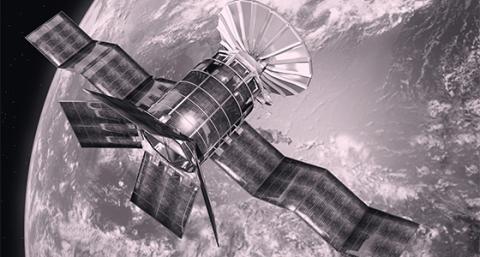
Scotland
Scotland has a long and established history of innovation, with Alexander Graham Bell, a Scottish-born inventor, scientist and engineer, patenting the first practical telephone
From Silicon Glen to the Scotland 5G Centre, a thriving space sector and iCAIRD-the Industrial Centre for Artificial Intelligence Research in Digital Diagnostics-our most northerly nation has a strong pedigree in telecoms and adjacent sectors.
Read more about Scotland's 5G landscape

Technologies & trends
The region boasts expertise and capabilities in a number of key telecom fields. Learn more about the relevant technologies.
The potential benefits of 5G, future wireless generations and full-fibre digital connectivity can only be realised if we have confidence in the resilience of our infrastructure.
Scotland is a pioneer in the cyber industry, with one of the most advanced cyber security education programmes in the world and an abundance of highly innovative cyber companies. The Scottish Informatics and Computer Science Alliance launched the SICSA Cyber Nexus in 2017 and aims to establish a coherent and vibrant Scottish Cyber Security and Resilience innovation community; linking academia, business, government, the public sector and the third sector.
ScotlandIS Cyber is a cluster that provides the capability, community and culture to drive the cyber industry forward. Its mission is to build a connected cyber community across Scotland, to drive growth and innovation in the cyber security industry in Scotland and to support the growing skills pipeline and the cyber security skills challenges.

Wireless networking is experiencing a period of exciting change with the development of new generations from 5G to 6G, WiFi 6 and 7, offering new use cases and business cases that extend far beyond just faster speeds.
The Scotland 5G Centre is the national centre for accelerating the deployment and adoption of 5G connectivity in Scotland’s Industry and Public Sectors. It offers 5G testbed services in innovation labs located in Dumfries, Aberdeen, Dundee, Kilmarnock and the Forth Valley.
The University of Strathclyde and Glasgow University both conduct world-recognised research in wireless networking and have deployed innovation projects and test networks across rural communities, in healthcare, agriculture, TV broadcast and education settings. And beyond academic research and deployments, the Smart Things Accelerator Centre is Scotland's dedicated IoT accelerator, supporting entrepreneurship across the region.

Core networks are critical infrastructure and new digital technologies and trends have the potential to disrupt and transform, ensuring capabilities, resilience and performance can meet emerging and future needs.
The University of Strathclyde has been ranked in the UK top five for Electronic and Electrical Engineering (The Guardian University Guide 2023). Alongside strong industrial engagement, the department is internationally recognised for its research excellence in core networking, including in designing networks to support communications infrastructure.

Non-terrestrial networking (NTN) refers to any network that involves space or airborne elements, including satellite communication networks, high-altitude platform systems (HAPS), and air-to-ground networks.
Space is big business in Scotland: the nation has a dedicated Space Stategy and pioneering research, innovation, manufacturing facilities and launch sites means Scotland has a unique end-to-end capability in the European small satellite value chain. Supporting the 130+ space focused organisations in the region, Space Scotland is a coordinating gateway to enable and promote the Scottish space sector as part of the wider UK proposition.

Artificial Intelligence (AI) is disrupting industry on a broad scale and the telecoms sector is no exception, with Valuates projecting that the global AI in telecoms market size will reach $14.99B by 2027, up from $11.89B in 2020.
The Industrial Centre for Artificial Intelligence Research in Digital Diagnostics (iCAIRD) brings together a pan-Scotland of 15 founding partners from across industry including SMEs, the NHS and academia. iCAIRD was awarded £10m in funding by Innovate UK while partner companies provide an additional £6m of supportive funding.
The centre has established research hub sites within before Queen Elizabeth University Hospital (Glasgow) and Aberdeen Royal Infirmary NHS Save Havens. It is integrated with Health Data Research UK and works closely with partners across Scotland and beyond.

Network management systems can be a critical driver of business value in the telecom industry, facilitating improved customer experience, optimised infrastructure operations and management of threats.

From batteries and sensors to antennas and lasers, the telecoms industry makes use of a broad range of materials and components such as copper, aluminium, ceramics and silicon, demonstrating diversification and innovation in the supply chain.
Silicon Glen-referring to the Central Belt triangle between Dundee, Inverclyde and Edinburgh, encompassing Fife, Glasgow and Stirling-has had a significant influence in semiconductor design and manufacturing.
Glasgow University's Nanoelectronics Research Centre conducts significant research in ultrafast systems technology. For instance, alternate channel materials are being actively pursued by many teams around the world to enable the continued scaling of complementary metal-oxide semiconductors. Glasgow, in partnership with Freescale Semiconductors, leads the world in III-V MOSFETs.

Diversification of the telecoms supply chain is ultimately about choice, a desire to broaden the choice of equipment and solution providers in the sector-driven by commercial, technical and geopolitical factors.
Universities within Scotland are involved in a number of diversification focused R&D projects: University of Strathclyde in REASON, part of the Future Open Networks Research Challenge, while University of Edinburgh are part of the Towards AI Powered and Secure Carrier-Grade Open RAN Platform project and University of Glasgow the CoMP-O-RAN project. The Scotland 5G Centre is also part of the 5G DU-Volution project.

Optical communication refers to the use of light to carry a communication signal to the remote end, instead of an electrical current.
Alter Technology TÜV Nord has opened a Photonics Design Centre in Glasgow, in Strathclyde’s Technology & Innovation Centre (TIC) in the Glasgow City Innovation District, to accelerate the commercialisation of photonic products into quantum technology and space markets. The new Design Centre will focus on supporting the development of highly integrated, miniaturised and robust photonic products to be used in Photonic based Satellite optical communications.

Deploying 5G in Places
We've spoken to local authorities up and down the UK, to hear first hand how they've approached digital infrastructure and connectivity programmes. Designed to be both practical and pragmatic, we've collated insights, assets and guides that can be replicated and adapted to help you on your journey to 5G.
Discover some of the ways you can seize the opportunity and be better connected.
DigitEXPO West 2025
Scotland’s largest technology showcase is also in Glasgow!DIGIT Expo is the largest annual enterprise technology conference series run in Scotland, and a must-attend for senior technologists, digital leaders, entrepreneur












